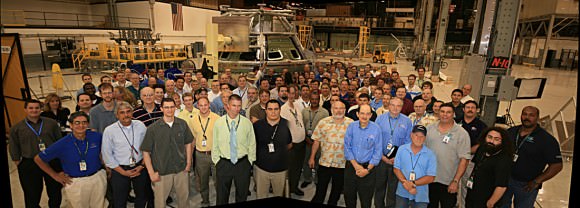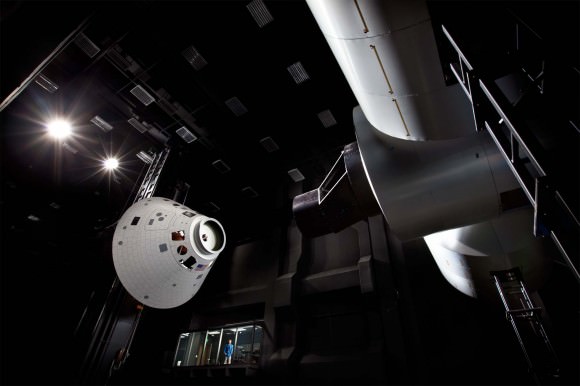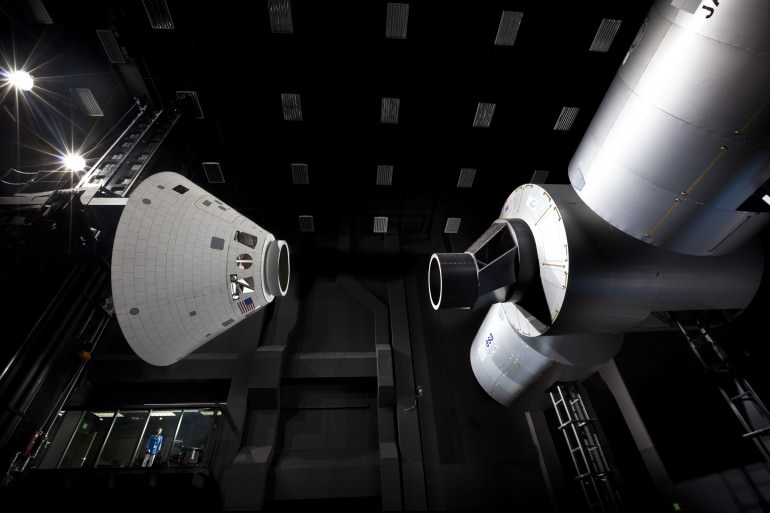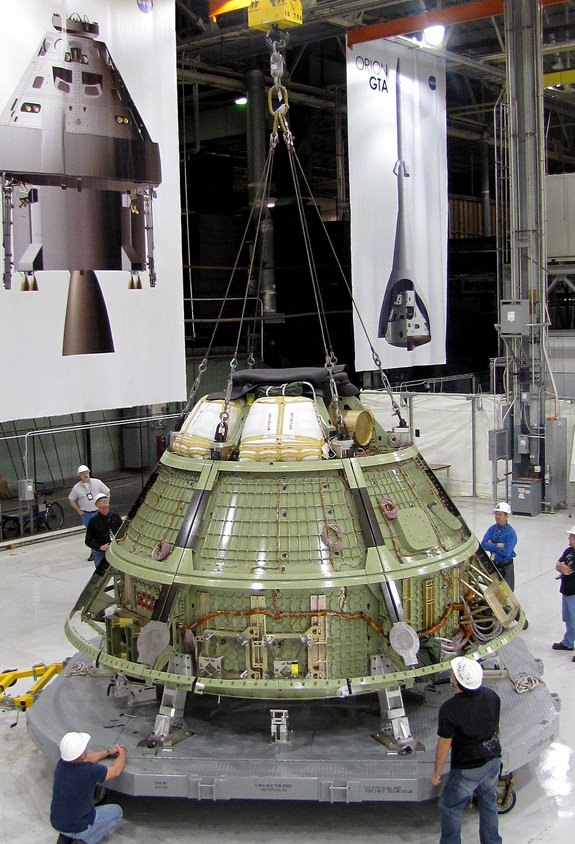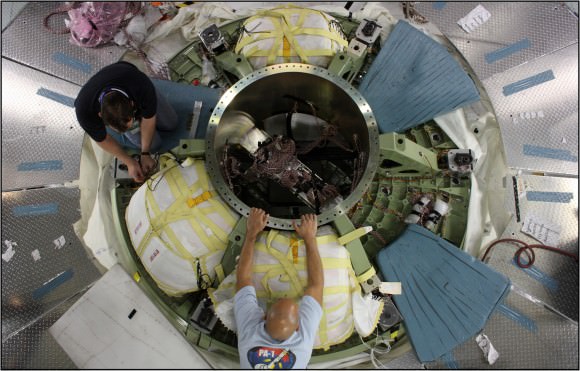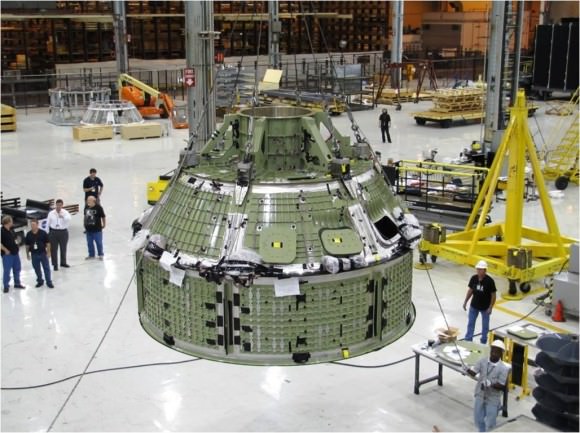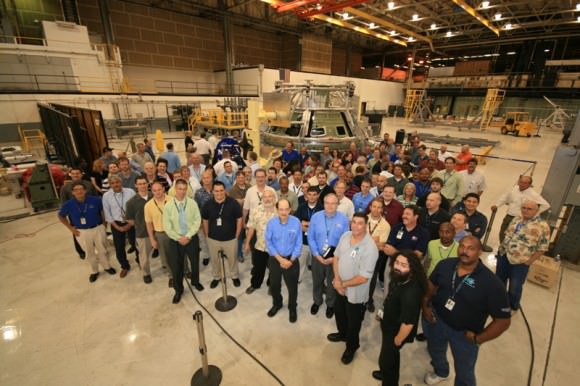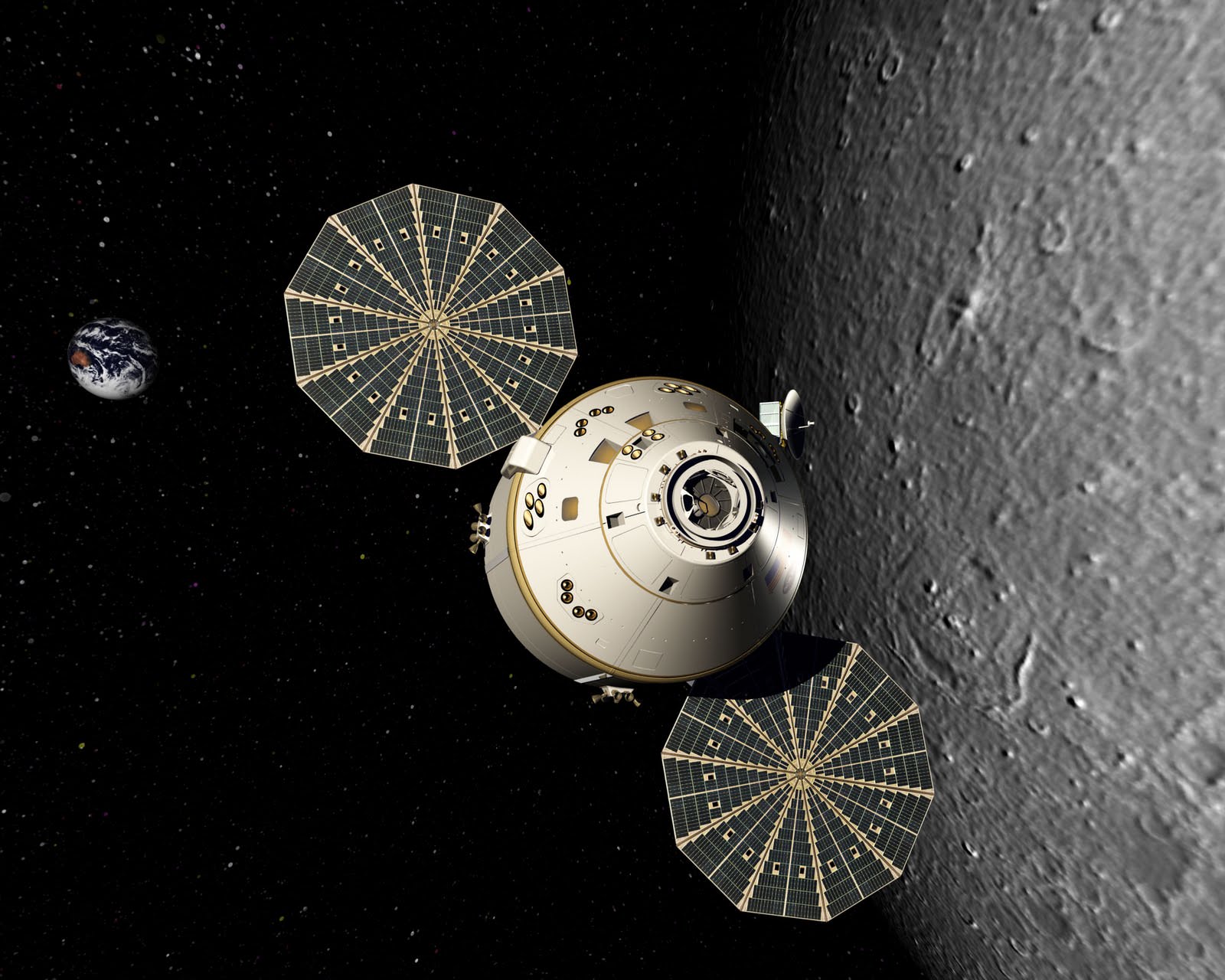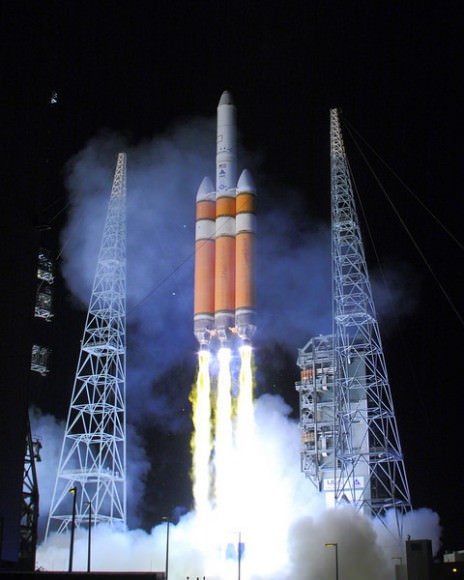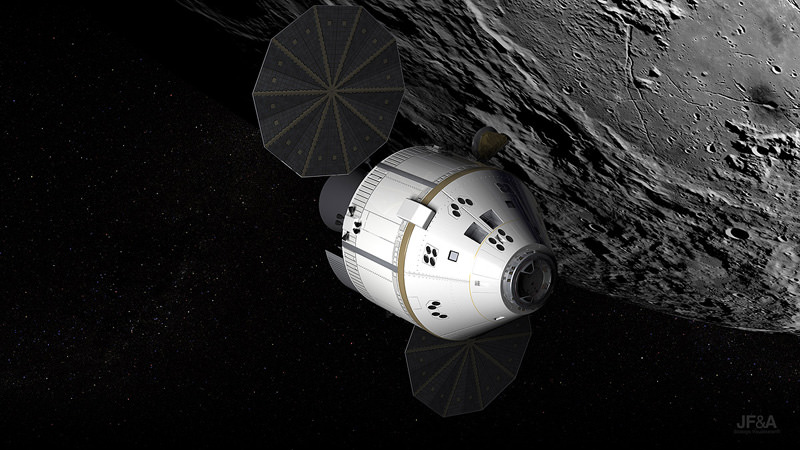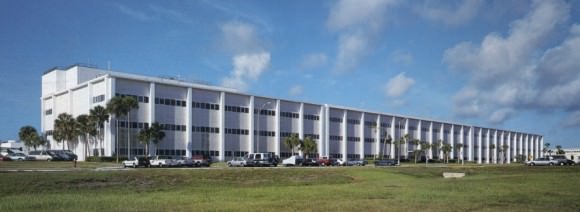[/caption]
The inaugural version of NASA’s new Orion human space exploration capsule was unveiled by Lockheed Martin at the company’s new state-of-the-art Space Operation Simulation Center (SOSC) located in Denver, Colorado. Orion is designed to fly human crews to low Earth orbit (LEO) and the International Space Station, the Moon, Asteroids, Lagrange Points and beyond to deep space and Mars.
Lockheed Martin is aiming for a first unmanned orbital test flight of Orion as soon as 2013, said John Karas, vice president and general manager for Lockheed Martin’s Human Space Flight programs in an interview with Universe Today . The first operational flight with humans on board is now set for 2016 as stipulated in the NASA Authorization Act of 2010.
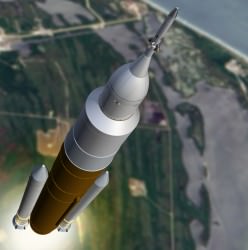
This Orion prototype capsule was assembled at NASA’s Michoud Assembly Facility (MAF) in New Orleans, LA and shipped by truck to Denver. At Denver, the capsule will be put through a rigorous testing program to simulate all aspects of a space mission from launch to landing and examine whether the vehicle can withstand the harsh and unforgiving environment of deep space.
Orion was originally designed to be launched by the Ares 1 booster rocket, as part of NASA’s Project Constellation Return to the Moon program, now cancelled by President Obama. The initial Orion test flight will likely be atop a Delta IV Heavy rocket, Karas told me. The first manned flight is planned for the new heavy lift rocket ordered by the US Congress to replace the Project Constellation architecture.
The goal is to produce a new, US-built manned capsule capable of launching American astronauts into space following the looming forced retirement of NASA’s Space Shuttle orbiters later this year. Thus there will be a gap of at least three years until US astronauts again can launch from US soil.
“Our nation’s next bold step in exploration could begin by 2016,” said Karas in a statement. “Orion was designed from inception to fly multiple, deep-space missions. The spacecraft is an incredibly robust, technically advanced vehicle capable of safely transporting humans to asteroids, Lagrange Points and other deep space destinations that will put us on an affordable and sustainable path to Mars.”
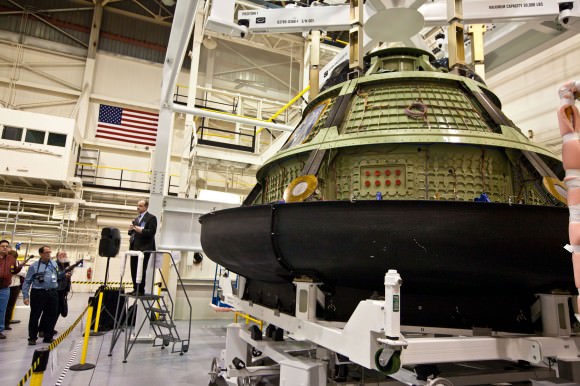
Lockheed Martin is the prime contractor for Orion under a multiyear contract awarded by NASA worth some $3.9 Billion US Dollars.
The SOSC was built at a cost of several million dollars. The 41,000 square foot facility will be used to test and validate vehicles, equipment and software for future human spaceflight programs to ensure safe, affordable and sustainable space exploration.
Mission scenarios include docking to the International Space Station, exploring the Moon, visiting an Asteroid and even journeying to Mars. Lockheed has independently proposed the exploration of several challenging deep space targets by astronauts with Orion crew vehicles which I’ll report on in upcoming features.
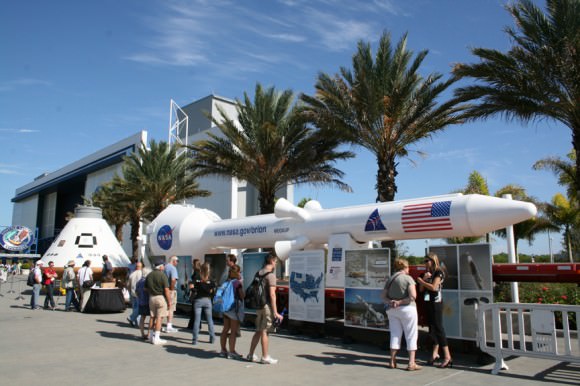
Full scale mockups of the Orion capsule and emergency abort rocket are on public display at the Kennedy Space Center Visitor Complex in Florida. Orion crew capsule mockup (at left) and Launch Abort System (LAS) at right. The emergency rocket will be bolted atop an Orion spaceship for the initial orbital test flight currently slated for 2013 launch. The LAS mockup was used in launch pad exercises at the New Mexico launch site of the LAS rocket blast-off in May 2010. Credit: Ken Kremer
The SOSC facility provides the capability for NASA and Lockheed Martin engineers to conduct full-scale motion simulations of many types of manned and robotic space missions. Demonstrations are run using laser and optically guided robotic navigation systems.
Inside the SOSC, engineers can test the performance of a vehicles ranging, rendezvous, docking, proximity operations, imaging, descent and landing systems for Earth orbiting mission as well as those to other bodies in our solar system.
“The Orion spacecraft is a state-of-the-art deep space vehicle that incorporates the technological advances in human life support systems that have accrued over the last 35 years since the Space Shuttle was designed.” says Karas. “In addition, the Orion program has recently been streamlined for additional affordability, setting new standards for reduced NASA oversight. Orion is compatible with all the potential HLLVs that are under consideration by NASA, including the use of a Delta IV heavy for early test flights.”
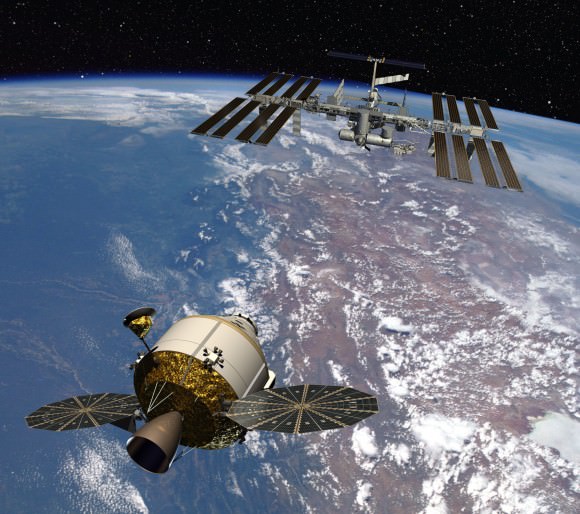
At this moment, the SOSC is being used to support a test of Orion hardware that will be flying on the upcoming STS-134 mission of Space Shuttle Endeavour. Orion’s Relative Navigation System – dubbed STORRM (Sensor Test for Orion RelNav Risk Mitigation) – will be put through its paces in several docking and navigation tests by the shuttle astronauts as they approach and depart the ISS during the STS-134 flight slated to launch on April19, 2011.
The Orion flight schedule starting in 2013 is however fully dependent on the level of funding which NASA receives from the Federal Government.
This past year the, Orion work was significantly slowed by large budget cuts and the future outlook is murky. Project Orion is receiving about half the funding originally planned by NASA.
And more deep cuts are in store for NASA’s budget – including both manned and unmanned projects – as both political parties wrangle about priorities as they try to pass a federal budget for this fiscal year. Until then, NASA and the entire US government are currently operating under a series of continuing resolutions passed by Congress – and the future is anything but certain.
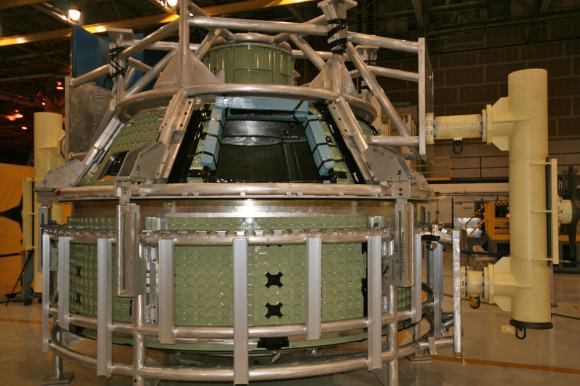
built at NASA Michoud Assembly Facility, New Orleans, LA. Credit: Ken Kremer
